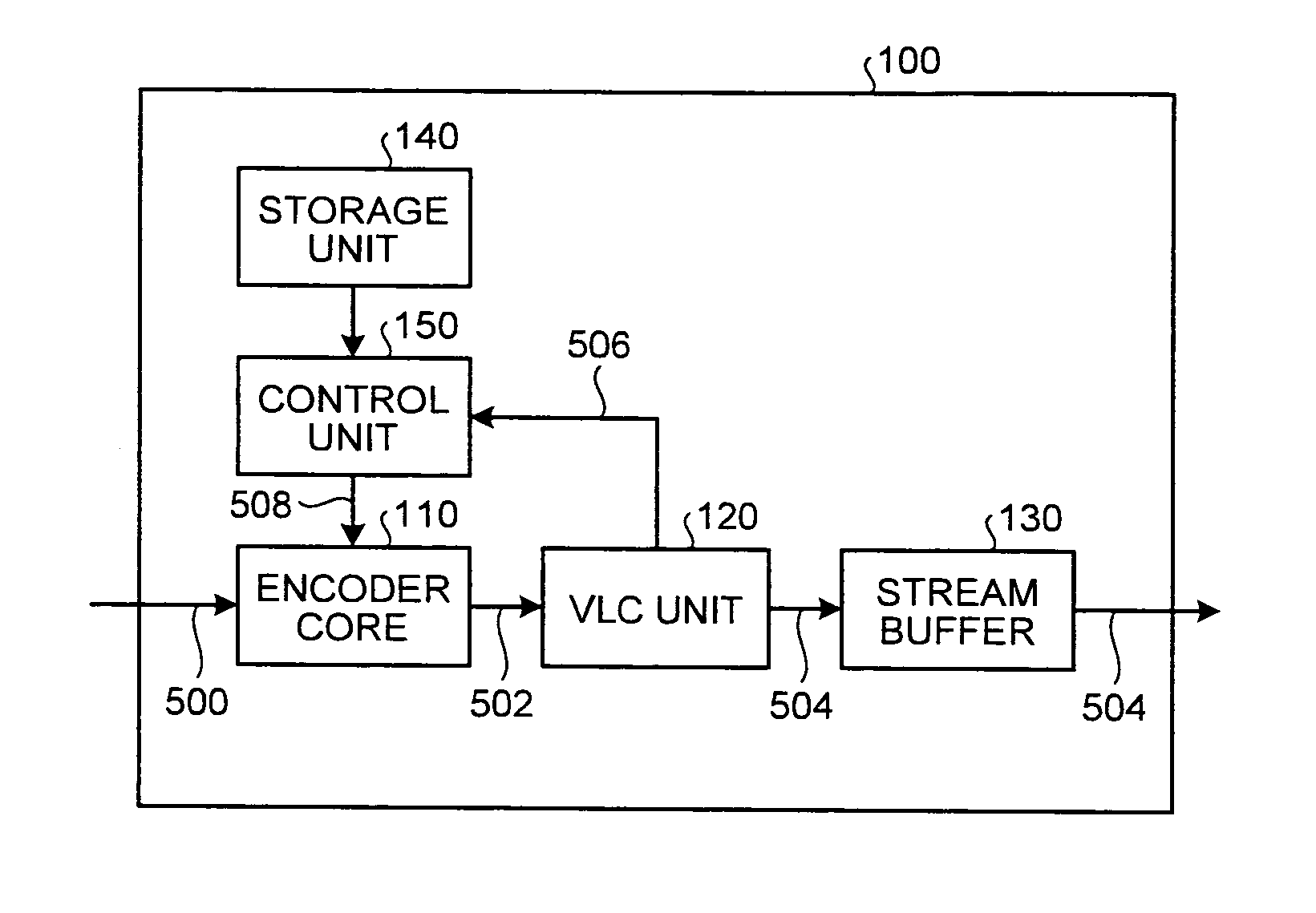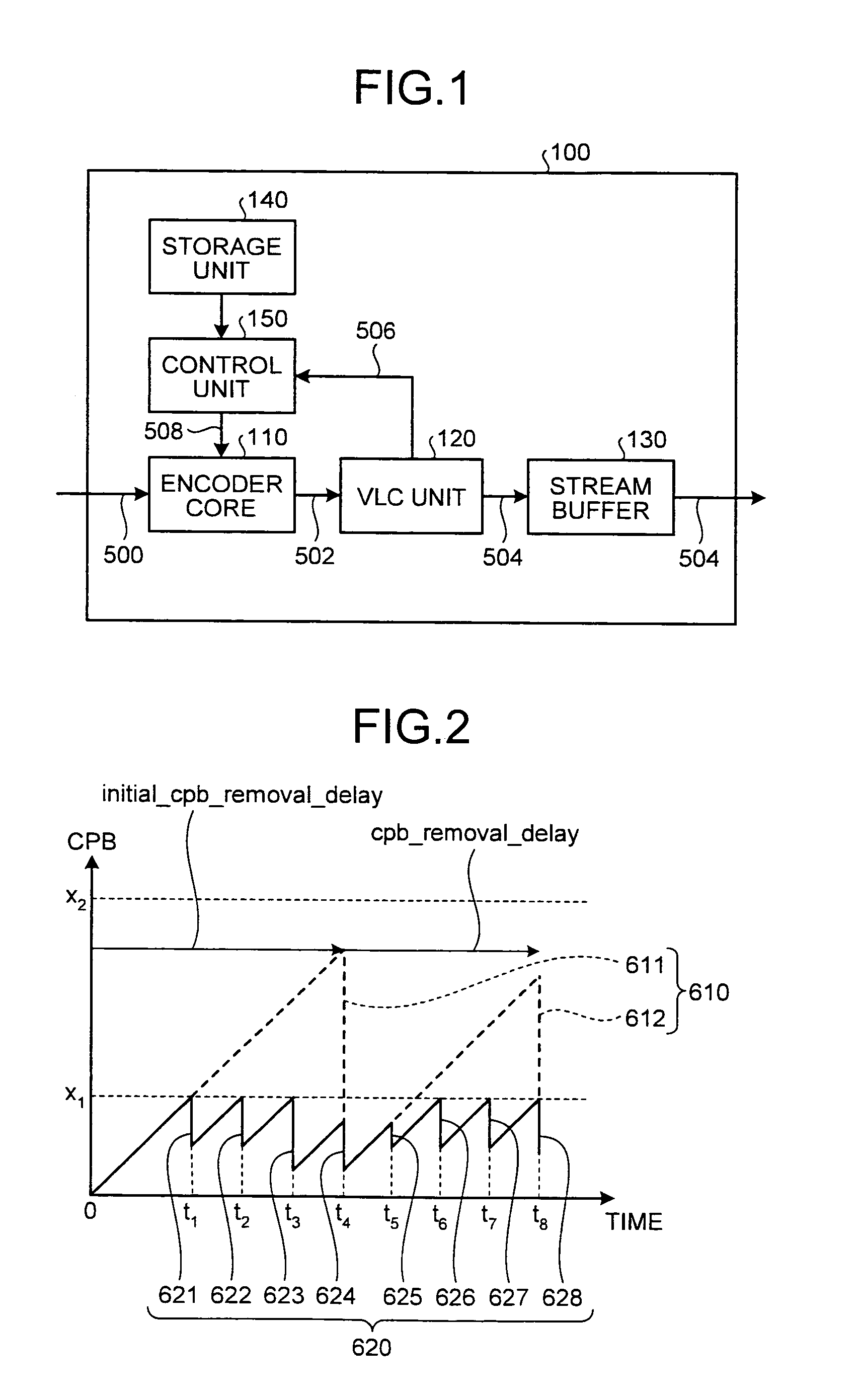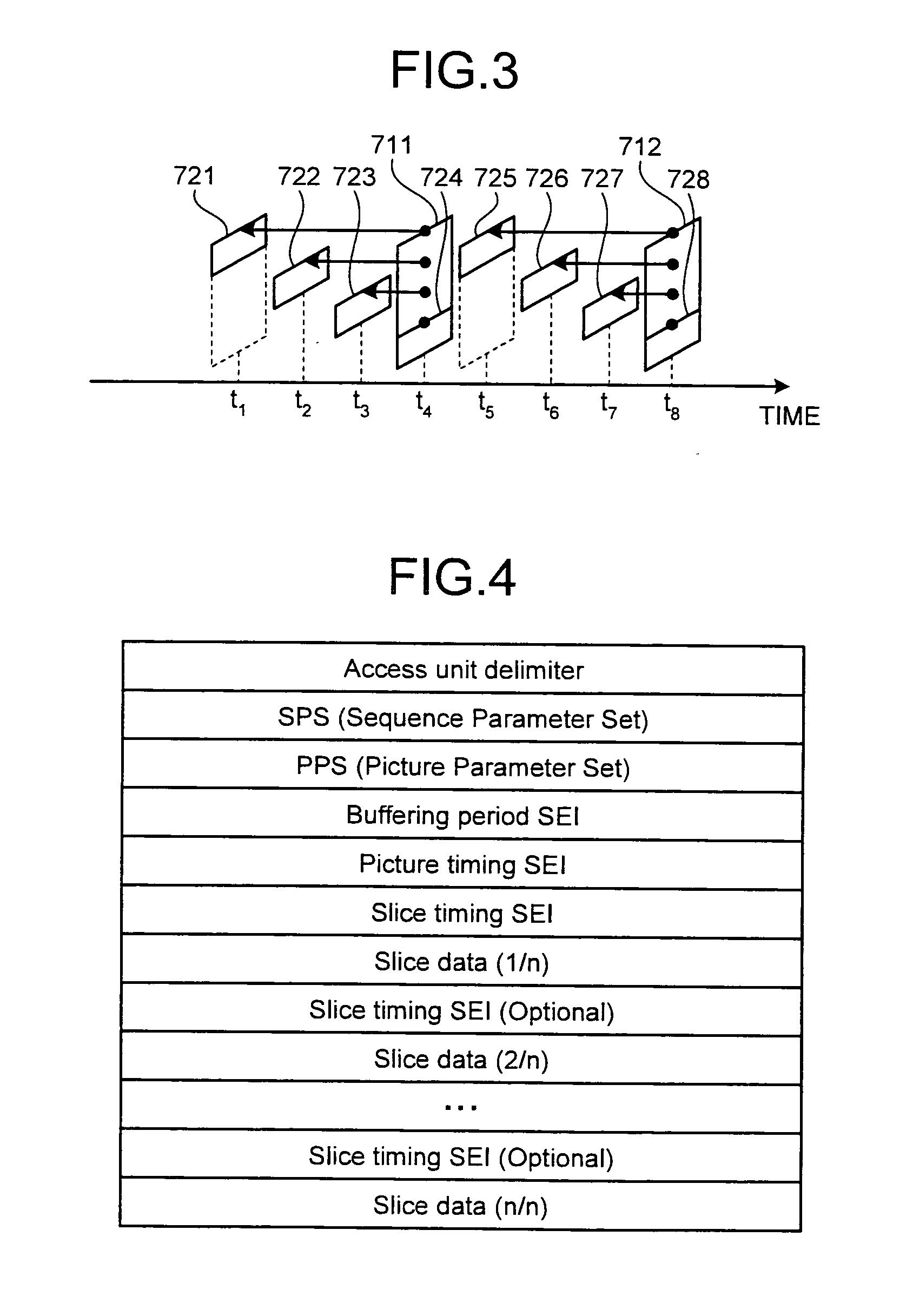Image encoding method and image decoding method
a technology of applied in the field of moving image encoding and decoding processes, can solve the problems of inability to improve image quality, limit the amount of compression/decompression delay that can be lowered, and transmission buffer delay caused by the virtual buffer model operating in the unit of pictures
- Summary
- Abstract
- Description
- Claims
- Application Information
AI Technical Summary
Problems solved by technology
Method used
Image
Examples
first embodiment
[0038]Exemplary embodiments of the present invention will be explained. An encoder according to the present invention performs a moving image encoding process that uses intra-frame predictions or inter-frame predictions. Also, during the encoding process, the encoder generates and outputs encoded data that a decoder is able to decode and display not only in units of pictures, but also in units of slices. As shown in FIG. 1, an encoder 100 includes an encoder core 110; a Variable Length Code (VLC) unit 120; a stream buffer 130; a storage unit 140; and a control unit 150. Under the control of the control unit 150, the encoder core 110 acquires an input image signal 500 and divides the input image signal 500 into slices. Further, the encoder core 110 performs signal processing, such as a Discrete Cosine Transform (DCT), that is related to the encoding process.
[0039]The VLC unit 120 acquires data 502 resulting from the process performed by the encoder core 110, performs an entropy encod...
second embodiment
[0117]As shown in FIG. 22, an encoder 101 includes a first encoder core 111, a first VLC unit 121, a first stream buffer 131, a second encoder core 112, a second VLC unit 122, a second stream buffer 132, a storage unit 140, a control unit 151, and a selector 160.
[0118]The first encoder core 111 and the second encoder core 112 perform regular encoding processes under the control of the control unit 151. The control unit 151 sets mutually different encoding parameters 508 and 518 (e.g., mutually different quantization parameters) into the first encoder core 111 and the second encoder core 112, respectively. The first encoder core 111 and the first VLC unit 121 generate first encoded data 504 by using a first parameter and temporarily store the first encoded data 504 into the first stream buffer 131. Similarly, the second encoder core 112 and the second VLC unit 122 generate second encoded data 514 by using a second parameter and temporarily store the second encoded data 514 into the ...
PUM
 Login to View More
Login to View More Abstract
Description
Claims
Application Information
 Login to View More
Login to View More - R&D
- Intellectual Property
- Life Sciences
- Materials
- Tech Scout
- Unparalleled Data Quality
- Higher Quality Content
- 60% Fewer Hallucinations
Browse by: Latest US Patents, China's latest patents, Technical Efficacy Thesaurus, Application Domain, Technology Topic, Popular Technical Reports.
© 2025 PatSnap. All rights reserved.Legal|Privacy policy|Modern Slavery Act Transparency Statement|Sitemap|About US| Contact US: help@patsnap.com



